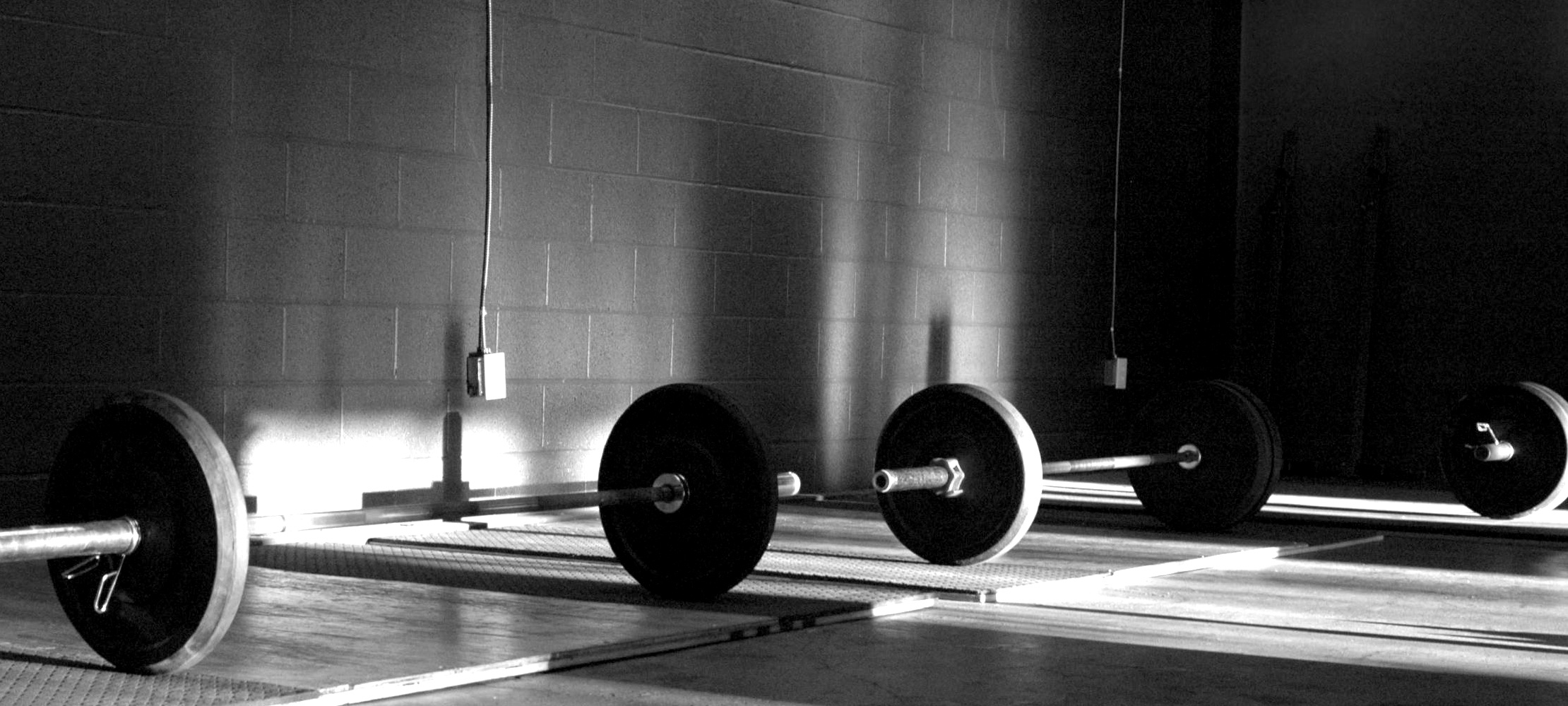The Secret Sauce: Enhancing Training with Mindset Shifts
“Vanessa, that’s the secret sauce!” That’s what a firefighter told me after completing a set of DB pullovers.
He had been wanting to use the pullover as a chest exercise but struggled with never feeling like his chest was doing the work. I had him focus on pulling his elbows in slightly and squeezing the dumbbell together like he was crushing it. He finished the set and was ecstatic! He jumped up off the bench and exclaimed “Vanessa, that’s the secret sauce!” I laughed.
If you too are a millennial, maybe you’ve guessed the first image that popped into my head - a blue squeeze bottle with a yellow Post-it note label that says “Michael’s Secret Stuff” on the front.
If you haven’t seen one of my favorite movies from childhood, the original “Space Jam”, I’ll fill you in. At the climax of the movie, Michael Jordan’s basketball team, ‘The Tune Squad,’ made up of Looney Tune characters, is losing terribly to the Monstar’s. MJ is trying to rally the team at halftime with a speech. Bugs Bunny on the other hand is filling up a blue squeeze bottle with tap water. MJ’s speech falls flat but Bugs Bunny shows them the bottle and tells the team about “Michael’s Secret stuff”. He drinks from it, grows massive muscles and rips out of his shirt. Naturally, the team instantly buys in and passes the bottle around. It’s “the thing” they’ve been needing to reach their goals in no time at all, some might even call it “the secret sauce.”
I coach firefighters, but just as any coach is, I’m regularly asked by someone who hasn’t yet reached their goals “Why isn’t it working?”. They’re usually at a point where they feel like they’re spinning their wheels in one of three ways, regardless of what kind of health habit they’re talking about:
- They keep ending up back at square one after starting and falling off their habit
- They’re doing the things just not seeing the results
- They feel like they’re working really hard and just not getting anywhere
Understandably, they’re frustrated. They’re convinced they’re missing something like they didn’t get the last page of the instruction manual for life’s health & performance problems. They’d do anything to find ‘the thing’ that will move them forward. They’re looking for the ‘secret sauce’.
And lucky for them, like Bugs Bunny did, I have it.
This sauce isn’t fancy. It only has 3 ingredients. It isn’t always a crowd-pleaser, actually some people even despise it, but it always gets the job done.
Ingredient #1: Consistency
You’ve heard it before “consistency is key” and if we’re sticking with the sauce analogy, it’s the base ingredient. Without it, there’d be no sauce, just a bunch of spices.
Consistency - having a regular style or pattern.
I’m not sure about you, but this is where the majority of people I work with struggle. Whether it’s regularly training, improving their nutrition, or going to bed at a decent time, they struggle to establish a positive habit. Despite their best intentions, they fail to follow through on their goal.
When asked about what to do, the answer I give them is not usually what they are expecting to hear. I tell them to DO LESS. Whatever plan they’ve created, they need to dial it back. This takes many by surprise because in a world where optimization is front of mind, the idea of doing less than optimal is almost disrespectful.
Did they plan on working out for an hour regularly, but fail to? Commit to 30 minutes.
Did they promise themselves they would run 5x a week, but never reach 5? Commit to 2-3x.
Did they say they were going to eat 6 servings of veggies a day, but end up at 1? Commit to 3, one at each meal.
The recommendation to do less to accomplish more isn’t novel, especially for coaches (hello minimum effective dose, work: rest ratios, and human psychology). However, for those you coach, it might go against their usual beliefs around training and the messages they regularly hear in the media.
When working to build consistency, momentum is critical. Whether or not you appreciated physics class in school, Newton’s first law can teach us something here, “an object in motion stays in motion.”
Not only does momentum keep the figurative ball rolling, it builds confidence.
So instead of feeling bad about not having worked out five times last week, someone feels good about working out twice. That confidence allows them to remain consistent, building the habit they’re working on, and take the required steps to improve their health & performance.
Consistency is what allows them to turn their attention to the next ingredient in the secret sauce.
Ingredient #2: Intensity
Once consistency is established, then you’re able to start refining and manipulating intensity - the level of effort for their health & performance habit.
In training this could be adjusting exercise volume, weight moved, RPE, tempo of exercise, duration, rest periods, difficulty of exercise, etc.
For many, they start with this ingredient first - they go hard right off the bat, which is why they lose consistency or end up hurt. That’s when we direct back to ingredient #1. On the flip side, there are those who are consistent, but the intensity at which they move isn’t as challenging as they think it is.
Have you ever worked with someone and had them do 3 sets of 5 back squats, but they end up using a weight that they could easily squat for 10? Or maybe have personally been the person who consistently runs, always at a comfortable pace, has the intention of getting faster, but never does?
Intensity is providing challenges outside of the comfort zone, whether in training or other health habits. Doing the same old thing without change gets us the same old results.
But Vanessa, “what about fundamentals?!” This isn’t me knocking fundamentals, this is me knocking lack of progression. To coaches, this is a no-brainer because we live, eat, and breathe progressive overload. However, for those we work with, they might need a reminder to dial intensity up from time to time.
Now, maybe someone isn’t looking to make progress, just maintain their abilities. “I’m not trying to do more, I’m just trying to stay where I’m at.” is a common statement I hear from firefighters who are 40+. Since this is their goal, they often write off intensity, thinking it isn’t necessary, but I beg to differ.
It is basic physiology that our abilities decline as we age. So as we age, something that was once easy, eventually becomes hard. Consistent physical activity allows us to slow down that decline, but it isn’t what allows us to maintain our abilities for as long as possible. Intensity is required to maintain abilities, because the old adage is true, “if we don’t use it, we lose it.”
This is typically when someone I’m coaching thinks to themselves, “Intensity is important, got it. And consistency was key. So, if some intensity is good, more is better!”.
Which brings us to ingredient #3.
Ingredient #3: Intention
It’s true that adaptation cannot happen without stress, but once again, physics class had something to teach us with Newton’s 3rd law, “For every action there is an equal and opposite reaction”.
This is when I introduce intention - the act of making deliberate choices - through the stress-strain model. Depending on how nerdy someone wants to get we can talk about dosing training sessions and specific intensities, but more often than not I go with just a few sentences,
“If we want to make progress, we have to be intentional about consistently pushing ourselves just enough that we don’t lose momentum. Meaning there are days where we hit the gas and days we hit the brakes, but we’re driving nonetheless.”
Intention in training programs requires us to look outside the training program. We have to take recovery into account which includes sleep, nutrition, life stressors, time commitments, and more.
In my opinion, intention is where coaches make the biggest difference.
Experienced coaches have the ability to produce results by building training programs that provide intensity in levels that maintain consistency. Coaches are able to intentionally select exercises or provide cues that correct movement issues, increase physical resilience, and are appropriate in risk versus reward. Coaches can intentionally educate those they work with on the why behind it.
If you’re the coach, the secret sauce is working from the top down: intentionally dosing intensity in a consistent manner.
If you’re the trainee, the secret sauce is working from the bottom up: being consistent and pushing intensity in an intentional manner.
Whichever you are, you likely already know the ingredients to the secret sauce. Maybe, you just had to change your perspective on them, much like Bugs Bunny changed the perspective of the Tune Squad.
And in case you haven’t seen Space Jam, they went on to reach their goal, winning the game, and hopefully you do too.
Subscribe to our blog
Subscribe to receive the latest blog posts to your inbox every week.
Related posts

Ohio State Strength Coach Transforms Linebacker

Why Strength Coaches Should Turn Away Late Athletes From the Weight Room


